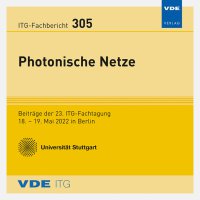Energy Efficiency Limits to ICT Equipment Lifetime
Konferenz: Photonische Netze - 23. ITG-Fachtagung
18.05.2022 - 19.05.2022 in Berlin
Tagungsband: ITG-Fb. 305: Photonische Netze
Seiten: 8Sprache: EnglischTyp: PDF
Autoren:
Grobe, Klaus (Global Sustainability, ADVA Optical Networking SE, Martinsried, Germany)
Inhalt:
Circular economy (CE) has severe implications on electronics systems design. Maximum re-use has to be considered in the initial product design phase. For certain ICT products, this may be contradicted by specific technical and operational aspects. The environmental impact of certain classes of ICT equipment is clearly dominated by use-phase energy consumption, which can be derived from lifecycle analyses (LCA). This necessitates a focus on energy efficiency, which may be conflicting with design in support of CE. Increasing energy efficiency of successor product generations can set an upper limit to maximum lifetime. Above this limit, further use of old equipment becomes net-negative, e.g., for the global warming potential, according to LCA. A use-phase / production-phase emissions ratio is defined that allows identifying whether replacement of ICT or other electronic equipment for reasons of energy efficiency and reduced total-lifetime emissions is necessary. From that, near-optimum lifetime and near-optimum replacement cycles, if existent, can be derived. Several examples are provided. High-capacity, fiber-optic WDM transport equipment should be replaced, due to fast pace of energy-efficiency gain. Other ICT equipment like fiber-plant monitoring devices should not be replaced for this reason.


